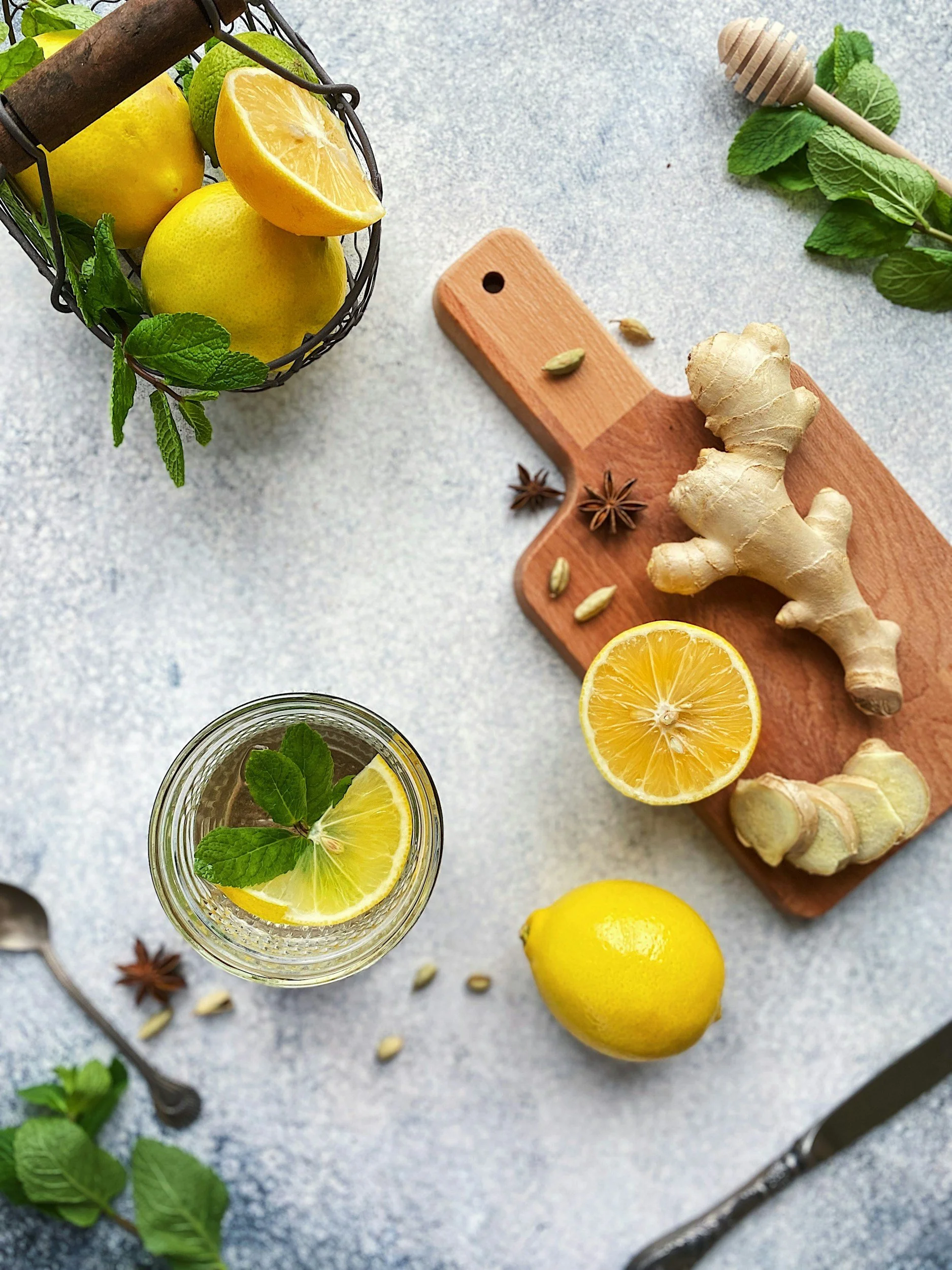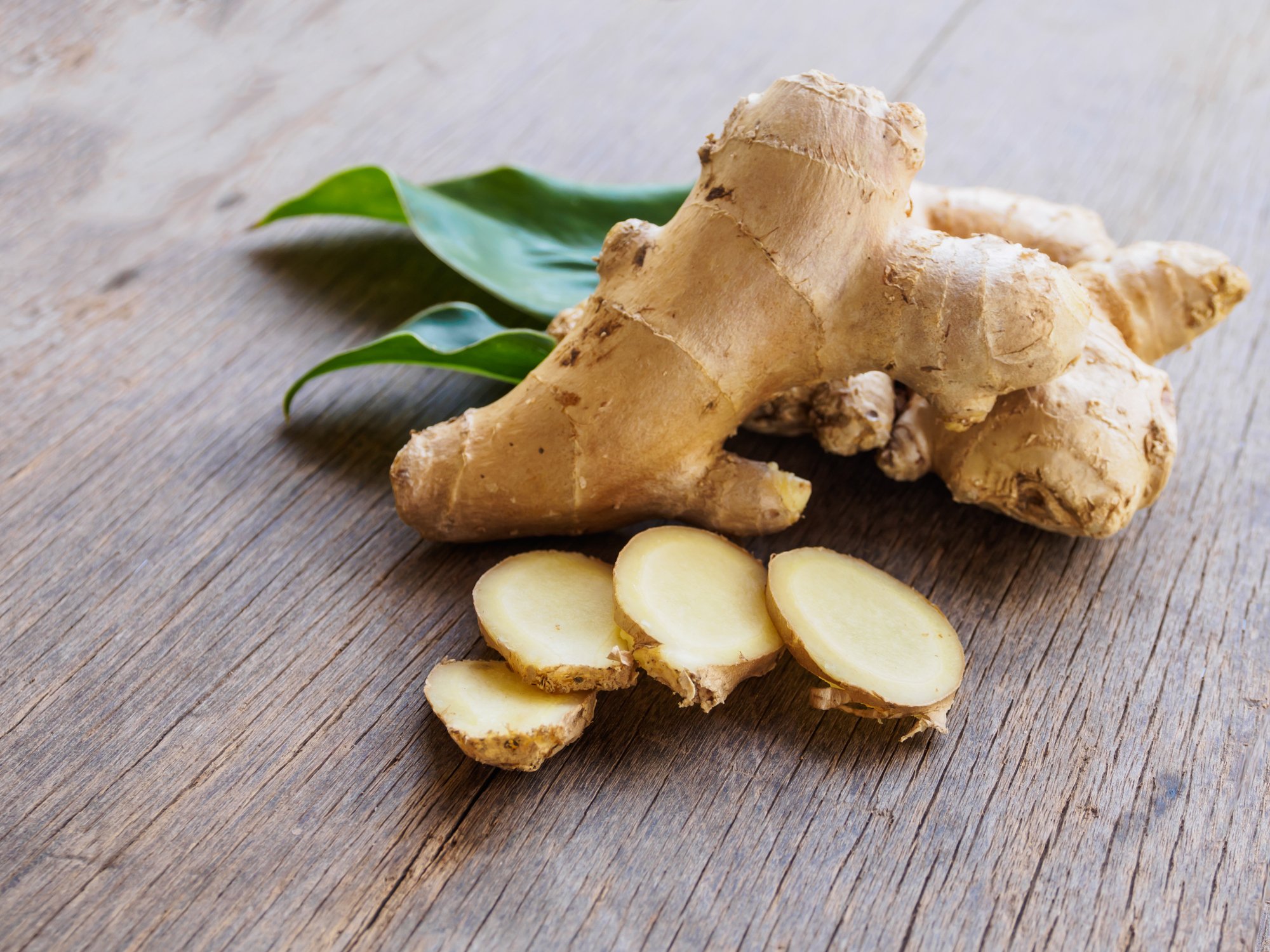
Ginger
Ginger (Zingiber officinale)
Plant family
Zingiberaceae
Other significant names
Traditional Chinese Medicine (TCM) fresh herb (sheng jiang) and dry (gan jiang).
Parts used
Rhizome (rhizoma)
Typical forms of prescription
Infusion
Candies
Tincture
Syrup
Ginger (Zingiber officinale) – Clinical Snapshot
Primary Actions
Antiemetic
Carminative
Diaphoretic
Sialagogue
Antispasmodic
Antitussive
Hepatoprotective
Anti-platelet
Anti-inflammatory
Circulatory stimulant
Cardioactive
Anticholesterolemic
Primary Indications
Nausea (including morning sickness and motion sickness)
Poor digestion
Dyspepsia
Flatulence
Colic
Diarrhoea
Poor circulation
Fever
Cramps
Arthritis
Back pain
Dysmenorrhea
⚠️Cautions / Safety⚠️
Avoid medicinal doses with calcium channel blockers
Excessive doses may interfere with cardiac, antidiabetic, and anticoagulant therapies
Inhibits thromboxane synthesis, monitor if taking Warfarin
Caution in early pregnancy
Shogaols
Formed from: Gingerols during drying or heating
Action: More pungent, anti-inflammatory, anticancer, neuroprotective
Use: In dried ginger, shogaols are stronger in action than gingerols and contribute to ginger’s circulation-boosting and warming properties. They are especially effective in chronic inflammation, cold-type conditions, and as a metabolic stimulant.
Zingiber officinale
Phytochemistry and Pharmacology
Resins
Action: Warming, stimulating, digestive tonic
Use: Ginger's resinous compounds help stimulate circulation, warm the extremities, and increase digestive fire (Agni). This makes ginger a key herb in cold, damp conditions and slow digestion.
Gingerols
Includes: [6]-Gingerol (primary active compound in fresh ginger)
Action: Anti-inflammatory, analgesic, antiemetic, antioxidant
Use: Gingerols give fresh ginger its spicy, warming properties. They are potent anti-inflammatories, particularly useful in arthritic pain, joint stiffness, and inflammatory digestive conditions. Gingerols also ease nausea, making ginger one of the top herbs for motion sickness, pregnancy nausea, and chemo-induced nausea.
Essential Oils (Volatile Oils)
Includes: Zingiberene, β-bisabolene, cineole, citral
Action: Carminative, antimicrobial, spasmolytic
Use: These aromatic oils support digestion by relaxing intestinal muscles, reducing gas and cramping, and enhancing enzyme secretion. They also have antibacterial and mild antiviral properties, making ginger useful in cold and flu support.
Proteolytic Enzymes
Includes: Zingibain
Action: Anti-inflammatory, digestive
Use: These enzymes help break down proteins, easing digestive load and supporting the pancreas. They also contribute to ginger’s use in muscle recovery and inflammation modulation.
Traditional use
Ginger originates in maritime Southeast Asia and is one of the earliest cultivated plants. It has been used as both food and medicine for thousands of years. It appears in ancient Sanskrit, Chinese, and Ayurvedic texts and has played a central role in Traditional Chinese Medicine (TCM).
In TCM, the dried (Gan Jiang) and fresh (Sheng Jiang) forms of ginger are used quite differently:
Dried ginger is warming and used for deep internal cold, such as epigastric pain, diarrhoea, vomiting with cold limbs, faint pulse, dyspnea, and cold-induced coughs.
Fresh ginger is used for external cold symptoms, such as coughs with thin white sputum, early-stage colds, and stomach-related vomiting caused by "cold in the stomach".
Across cultures, ginger has been revered for its ability to stimulate circulation, ease digestion, and dispel cold from the body.
Clinical Discussion
Ginger is a warming, anti-inflammatory, and digestive stimulant rich in active compounds such as gingerols, shogaols, and zingerone:
Gingerols are abundant in fresh ginger and are responsible for its pungency and anti-nausea effects.
Shogaols are formed from gingerols during heating and drying, giving dried ginger a stronger warming action.
Zingerone, milder and sweeter, develops during drying and contributes to digestive and anti-inflammatory properties.
Medicinally, ginger is:
A well-researched remedy for nausea, especially in motion sickness, morning sickness, and post-operative nausea.
A digestive tonic that improves absorption, relieves flatulence, bloating, and indigestion.
Useful in circulatory conditions involving cold hands and feet, poor peripheral blood flow, chilblains, or menstrual pain.
Effective for arthritic and muscular pain due to its anti-inflammatory and warming actions.
A respiratory aid in the form of fresh ginger tea, helpful for coughs, sore throats, and mild fevers.
Shown to help lower blood cholesterol when taken in small daily doses (e.g. 2g/day of dried ginger).
In formulas, ginger tincture is often added in small amounts to enhance the absorption and bioavailability of other herbs.
Cultivation/Harvesting
Cultivated ginger is a sterile perennial, meaning it does not reproduce by seed but propagates through its rhizomes (root pieces). It prefers warm, humid conditions, rich, well-drained soil, and partial shade.
Plant sprouted rhizome pieces in spring after frost risk has passed, either in containers or sheltered ground.
Keep well-watered and feed regularly with organic compost or mulch.
Ginger takes 8–10 months to mature. Harvest when the leaves begin to yellow and die back, typically in late autumn.
Carefully dig up the rhizomes, wash, and dry for storage or immediate use.
Fresh ginger can be stored in the fridge or freezer, while dried ginger should be kept in an airtight jar away from heat and light.
Key Botanical Features of Ginger (Zingiber officinale)
Growth
Type: Perennial herb.
Size: Typically 60–120 cm (2–4 feet) tall.
Stem: Pseudo stems formed by tightly packed leaf sheaths, giving the plant a grass-like appearance.
Rhizome & Roots
Type: Thick, branched rhizome that grows underground.
Texture: Fleshy and knotted, with a yellow to light brown outer skin.
Aroma: Strong, spicy fragrance from essential oils and gingerol compounds.
Function: Stores nutrients and allows vegetative reproduction.
Leaves
Type: Simple, alternate.
Shape: Lanceolate (long and narrow) with a pointed tip.
Size: 15–30 cm (6–12 inches) long, 2–3 cm (0.8–1.2 inches) wide.
Texture: Smooth, with a slightly waxy surface.
Colour: Bright green on both sides.
Flowers
Type: Small, yellow-green flowers with purple-brown markings.
Size: About 2–3 cm (0.8–1.2 inches) in diameter.
Flower Arrangement: Flowers grow in dense spikes on a separate, short, leafless flower stalk emerging from the rhizome.
Blooming Period: In tropical climates, flowering occurs seasonally, but cultivated plants rarely flower.
Pollination: Primarily by insects, cultivated ginger is usually propagated vegetatively.
Fruits & Seeds
Fruit Type: Small, capsule-like, containing seeds.
Size: About 1 cm (0.4 inches) in diameter.
Seed Dispersal: Rarely produced in cultivated varieties, as ginger is primarily grown through rhizome propagation.
Habitat & Growth Conditions
Climate: Prefers warm, humid tropical and subtropical climates.
Soil: Grows best in rich, well-drained, loamy soil with high organic content.
Sunlight: Prefers partial shade to full sun.
Water Requirements: Requires consistent moisture but does not tolerate waterlogging.
Distribution: Native to Southeast Asia, but widely cultivated in India, China, Africa, and the Caribbean.
Sustainability/Conservation
Widely cultivated, horseradish (Armoracia rusticana) is a British (naturalised) alternative.
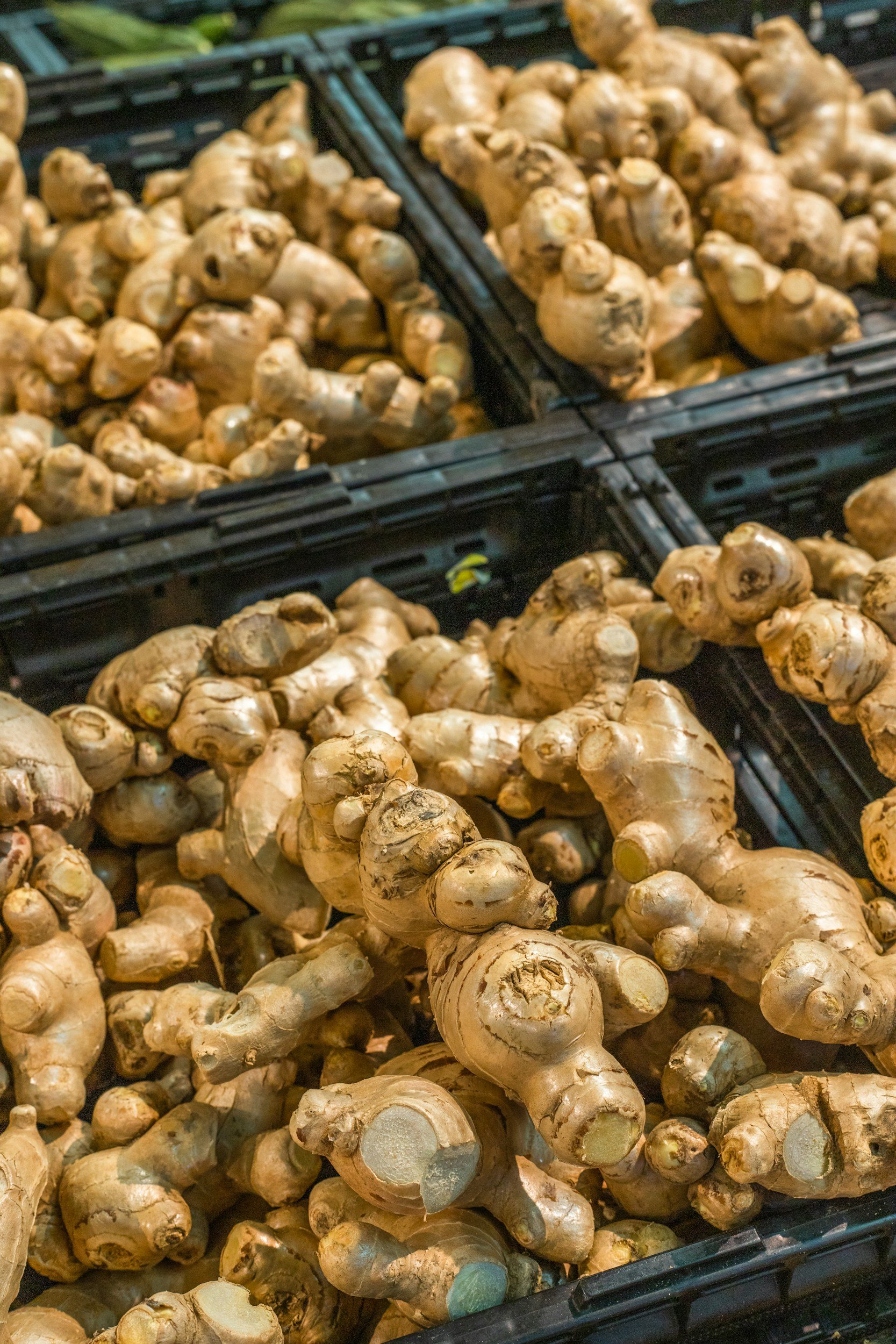
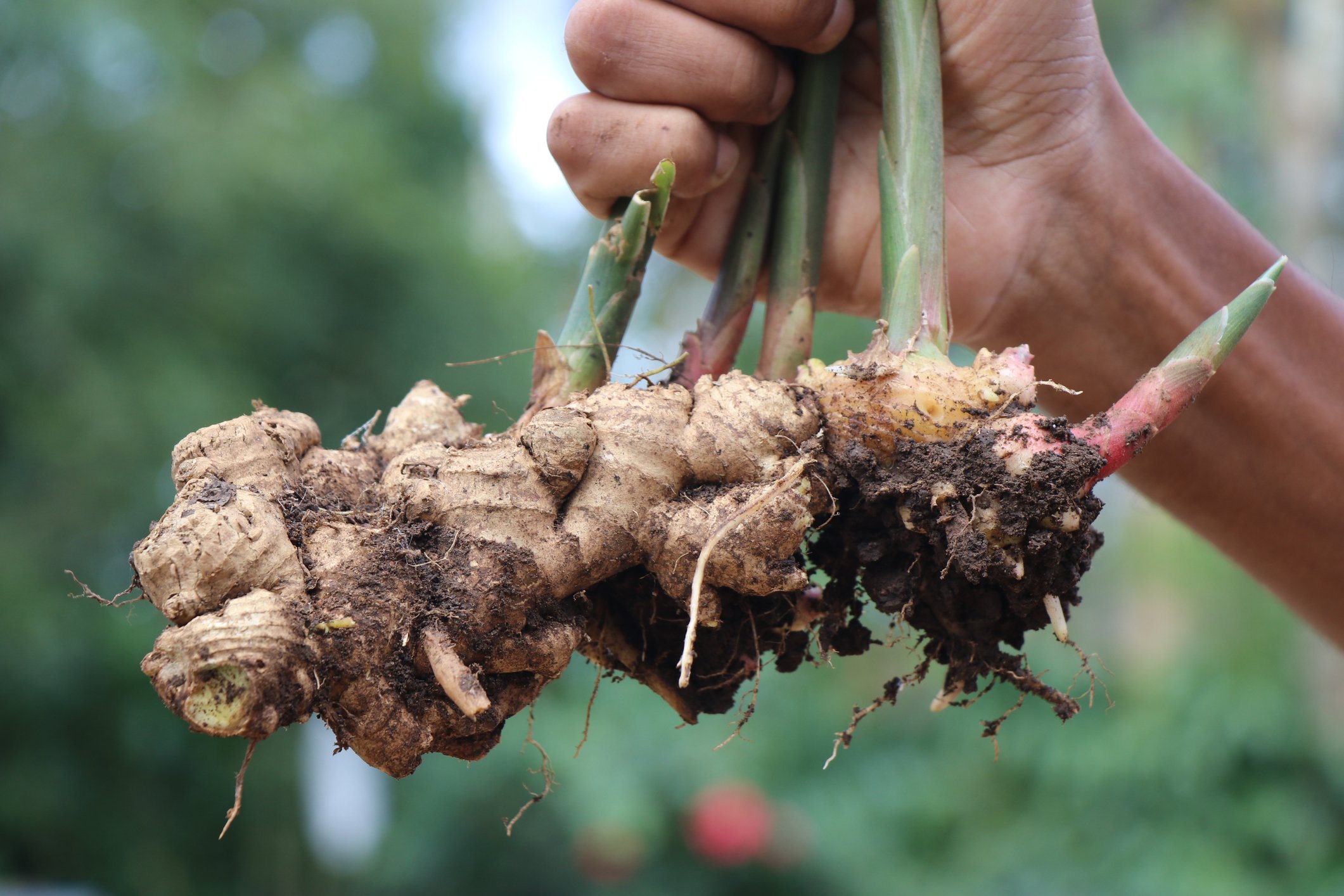
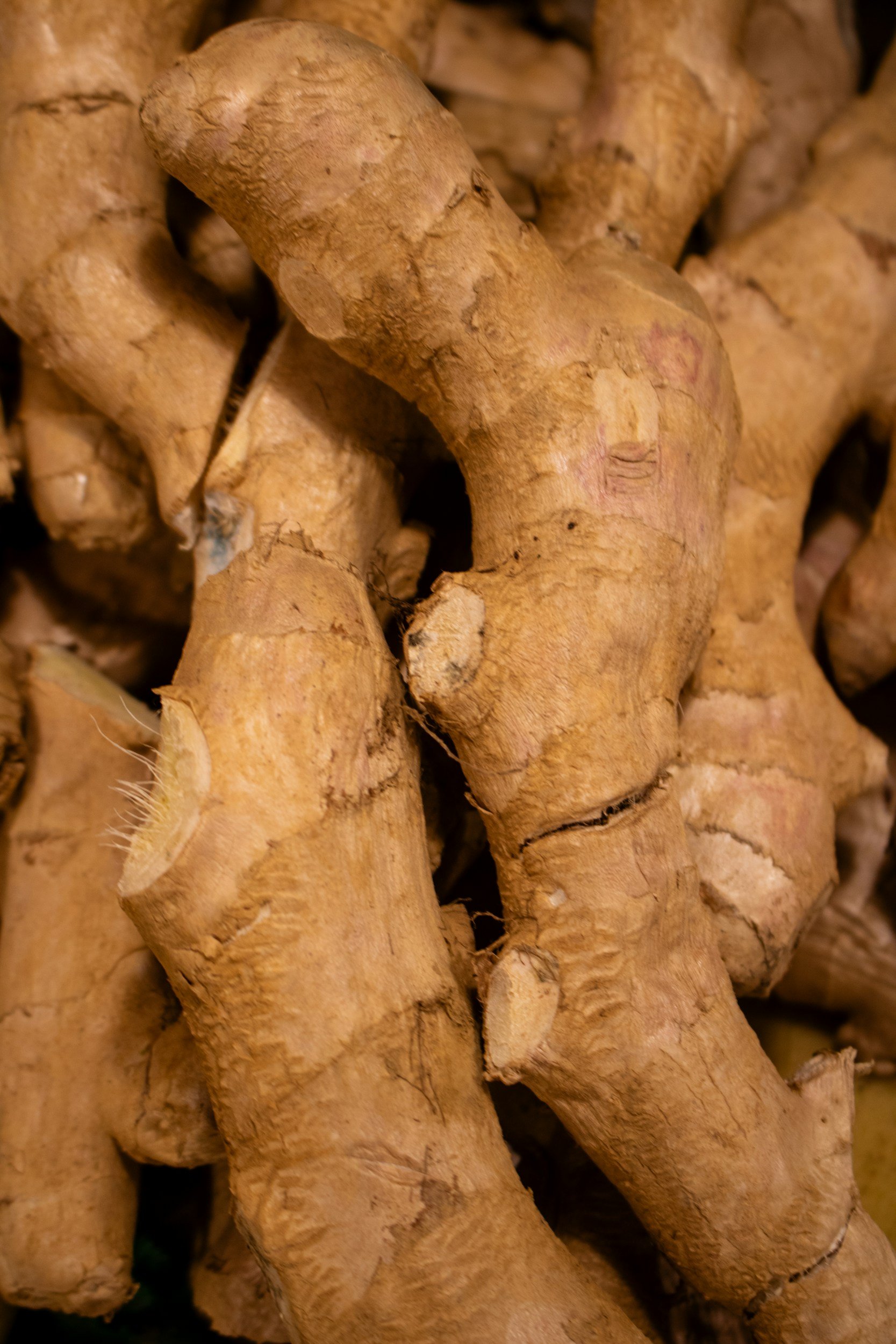

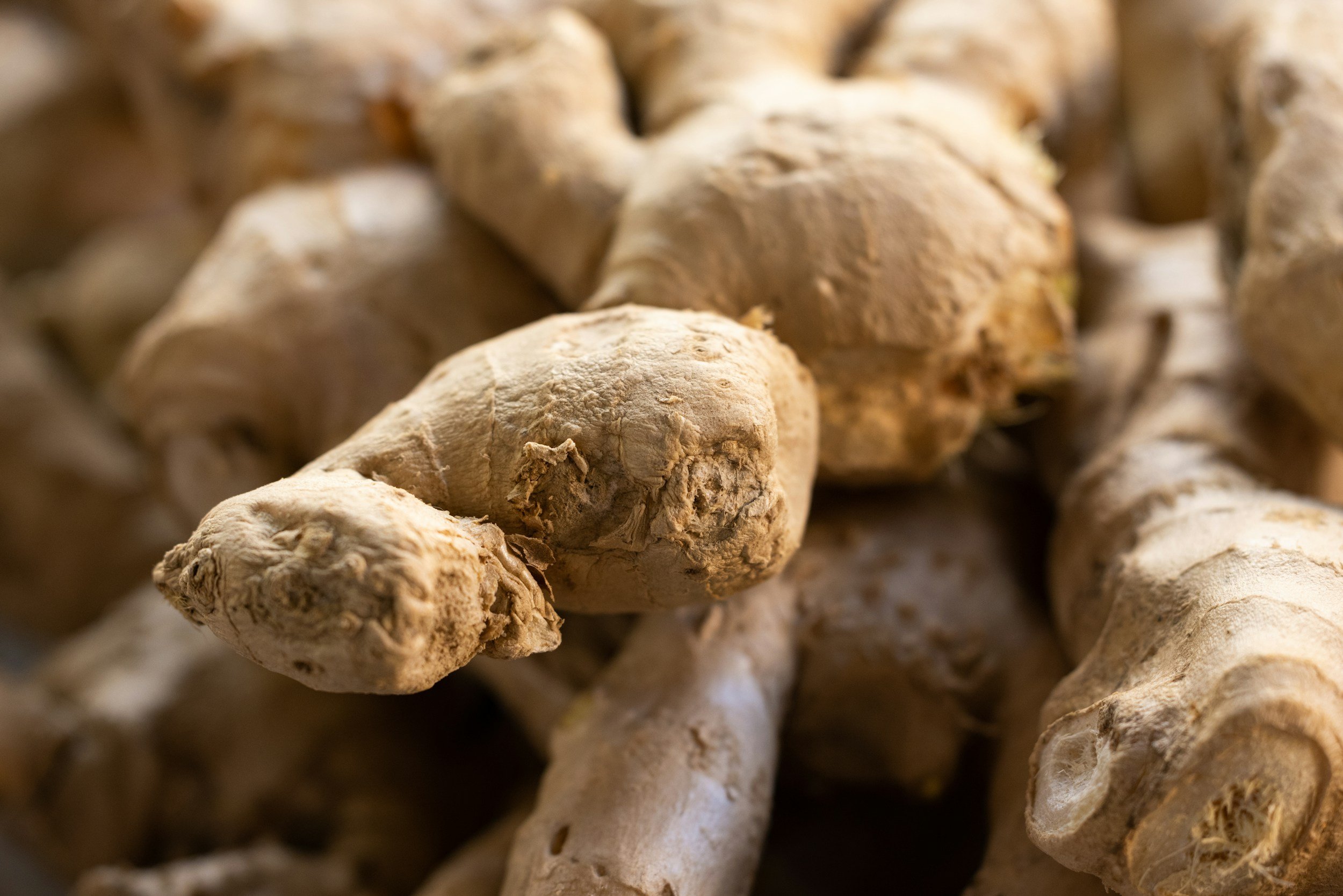
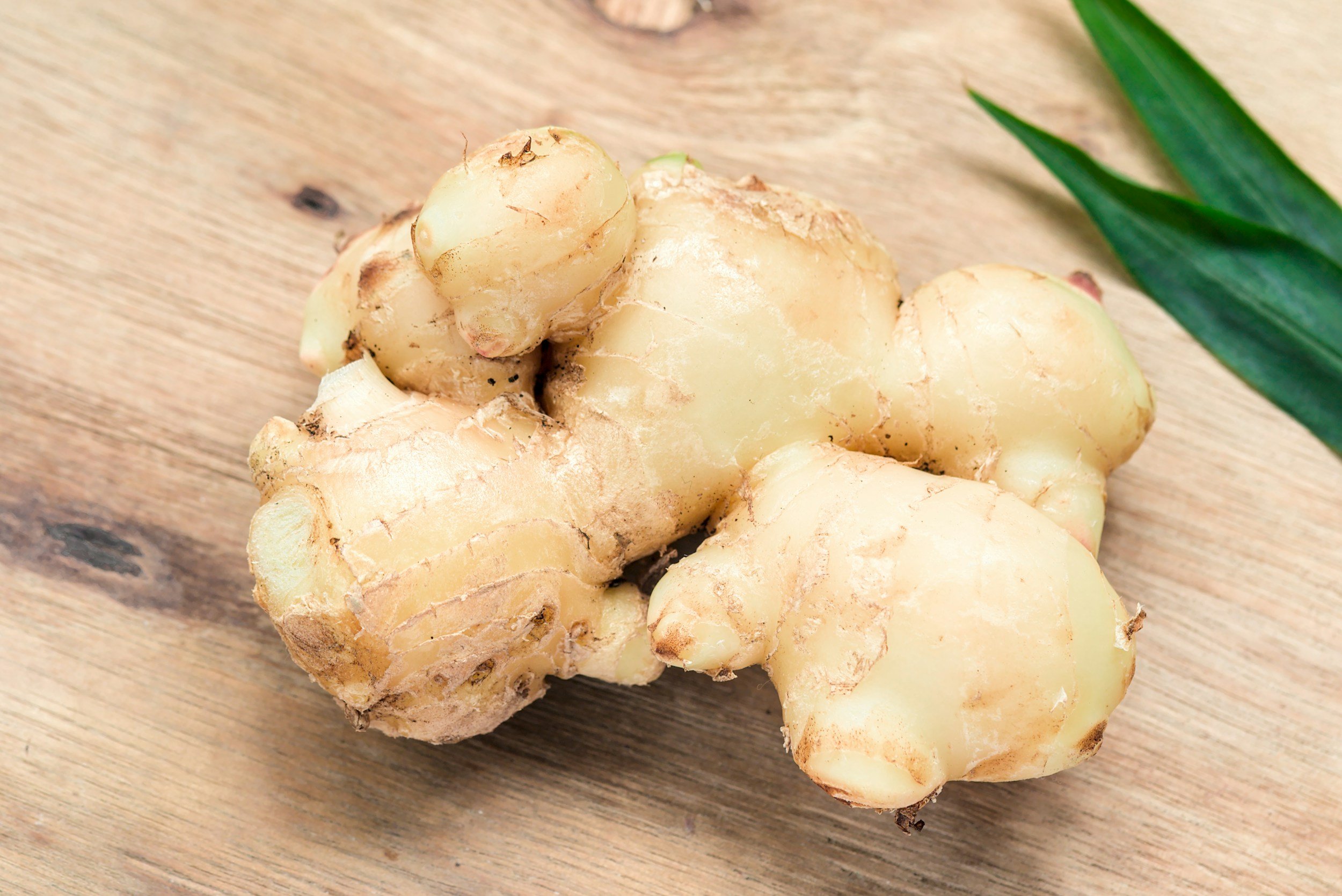
Sources
Bartram, T. (1998). Bartram’s Encyclopedia of Herbal Medicine. Constable.
Fisher, C. (2009). Materia Medica of Western Herbs, (2018 edition). Finchley Road, London. Aeon Books.
Hedley, C & Shaw, N. (2020). A herbal book of making and taking. Finchley Road, London. Aeon Books.
Hoffmann, D. (2003). Medical Herbalism: The Science and Practice of Herbal Medicine. Healing Arts Press.
McIntyre, A. (2019). The complete herbal tutor, revised and expanded edition. Finchley Road, London. Aeon Books.
Plants of the World Online | Kew Science. (n.d.). Plants of the World Online. https://powo.science.kew.org/
Disclaimer: This page is for educational purposes only. Consult a qualified medical herbalist before using herbs, especially during pregnancy, when trying to conceive, while breastfeeding, for medical conditions, or with children.
Read the full disclaimer → Medical Disclaimer.





